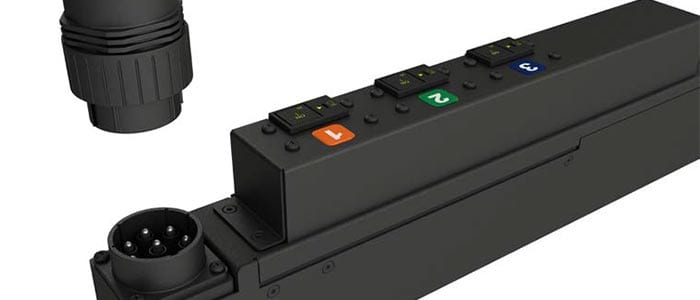Choosing the Right Monitored PDU for Your Data Center
When it comes to efficient power distribution in your data center, selecting the right monitored PDU (Power Distribution Unit) is crucial. At Joe Powell & Associates, we offer a variety of monitored PDUs to ensure reliable power distribution and management for your mission-critical infrastructure.
Understanding Monitored PDUs and Their Benefits
Monitored PDUs are advanced power distribution units that provide real-time monitoring of the power usage in your data center. By offering insights into power consumption and potential issues, monitored PDUs enable you to optimize energy usage, prevent downtime, and improve the overall efficiency of your data center operations.
Factors to Consider When Selecting a Monitored PDU
To choose the right monitored PDU for your data center, consider factors such as your facility’s power requirements, the type of equipment you have, the level of monitoring needed, and the available space for installation. It’s also essential to take into account any future expansion plans to ensure your monitored PDU can accommodate your evolving needs.
Types of Monitored PDUs
At Joe Powell & Associates, we offer a range of monitored PDUs, including:
Basic
Most people are familiar with the basic PDU. It’s a large power strip and is designed to provide standard electrical outlets for data center equipment. This type of PDU has no monitoring or remote capabilities.
Metered
A metered PDU distributes network-grade power and offers remote monitoring and control capabilities. This helps users optimize load levels and prevents overloads.
Monitored
A monitored PDU also distributes network-grade power and supports local management. Monitored PDUs have the capability to monitor power distribution with local and remote monitoring options. The monitoring capabilities help users prevent downtime due to overloads and other power events.
Switched
A switched PDU distributes network-grade power and allows the capability to toggle power on and off for individual outputs.
Automatic
An automatic PDU has the ability to further eliminate downtime by automatically switching to a secondary power source if the primary fails or requires maintenance.
Hot-Swappable
With a hot swap PDU, you can manage repairs or replacements without taking your network offline. The primary input plugs into an online UPS system, the second plugs directly into a wall outlet. A manual transfer switch allows the load to be shifted from the UPS to direct primary power. You can then power down the UPS and remove it for repair or replacement while connected critical equipment remains powered and operational.
How Should I Set Up My PDU?
Where and how you set up your PDU will depend on your IT environment and needs. Here are some things to consider when deciding how to set up your PDU.
Location
Your PDU location will depend on your needs. PDU models are available vertical or horizontal and can be mounted in a rack enclosure, on a wall, or under a shelf.
Input Power Information
Depending on your building type, you will either have single-phase or three-phase power. Single-phase power will alternate between negative and positive voltage. This means the wave has zero voltage when moved from positive to negative and back.
Most household and office power distribution is single-phase. Three-phase eliminates the moments of zero voltage by offsetting three simultaneous waves. Three-phase power is common in commercial and industrial environments.
Number of Outlets Needed
The number of outlets you need will depend on the number of devices you need to connect. Keep in mind devices that have more than one plug, or devices that must be plugged into another, may change the number of outlets needed. Include devices such as lights or cooling fans and leave room for additional devices to be added in the future.
Need Help Selecting the Right PDU for Your Business?
Learn more about PDU systems and how to choose the right one for your organization with our PDU Buyer’s Guide.
Ready to get the most efficiency and power distribution from your PDU? Contact our office!

